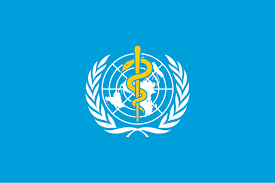
Childhood Obesity on the Rise: WHO Report Highlights Urgent Need for Action
The latest findings from the WHO European Childhood Obesity Surveillance Initiative (COSI) paint a concerning picture of the state of childhood overweight and obesity across the WHO European Region. Covering the years 2022–2024, the sixth round of COSI data reveals that most participating countries have failed to reduce these rates, with increases in childhood obesity more common than decreases.
The fact sheet, which offers the first post-COVID-19 analysis of childhood obesity, underscores an urgent need for robust policies to safeguard the health of future generations. “Overweight and obesity among children are not just health challenges – they represent a broader societal issue that affects educational outcomes, economic productivity, and overall well-being,” said Dr. Gauden Galea, Strategic Advisor to the Regional Director on Noncommunicable Diseases (NCDs) and Innovation at WHO/Europe.
Alarming Trends and Regional Disparities
Data collected from 37 countries, encompassing around 470,000 children aged 7–9, reveals that one in four children in this age group is overweight, and 11% are living with obesity. Boys are disproportionately affected, with 27% overweight and 13% obese, compared to 23% and 9% for girls.
The disparities extend across countries, with overweight levels ranging from 9% to 42% and obesity levels from 3% to 20%. In over half of the countries, at least one in ten children are obese, and in some, nearly one-third of children are overweight.
“Despite ongoing efforts and high-level discussions, the prevalence of childhood overweight and obesity remains alarmingly high,” said Dr. Kremlin Wickramasinghe, WHO/Europe’s Regional Adviser on Nutrition, Physical Activity, and Obesity. He highlighted that commercial interests often obstruct policy implementation, delaying the adoption of measures like mandatory restrictions on unhealthy food marketing and front-of-pack labeling, which have proven effective in reducing childhood obesity.
Post-Pandemic Challenges
The findings also provide insight into the impact of the COVID-19 pandemic on childhood obesity. Countries like Finland, Malta, Slovenia, and Sweden recorded significant increases in obesity rates, while only San Marino saw a decline. For overweight prevalence, increases were observed in Bulgaria, Malta, Slovenia, and Sweden, while decreases were noted in Greece, Israel, Italy, and Spain.
These trends suggest that the pandemic exacerbated existing challenges in certain regions, further highlighting the need for sustained and adaptive policy efforts.
The Path Forward: Prioritizing Prevention
COSI’s findings emphasize the need for tailored interventions to address the specific challenges faced by individual countries. Significant disparities between nations call for localized strategies, while broader efforts should focus on creating environments that promote healthy diets and physical activity.
Continuous surveillance through initiatives like COSI is essential for tracking progress and guiding evidence-based policy decisions. “Policies that make healthier choices the easier choices are key to halting the obesity epidemic,” Dr. Galea stressed.
A Global Initiative for Change
Since its inception in 2007, COSI has grown from monitoring 13 countries to 46, making it the largest childhood obesity surveillance initiative in the world. Across its six rounds of data collection, COSI has compiled information on approximately 1.7 million children, providing a comprehensive database to help nations track trends and implement effective policies.
This data plays a critical role as countries prepare for the 2025 United Nations High-Level Meeting on NCDs, aiming to halt the rise in obesity and achieve Sustainable Development Goal Target 3.4, which seeks to reduce premature mortality from NCDs by one-third.
The COSI report serves as a clarion call for urgent action. By prioritizing health-promoting policies and empowering children and families with healthier choices, countries can confront this epidemic and secure a brighter, healthier future for the next generation.